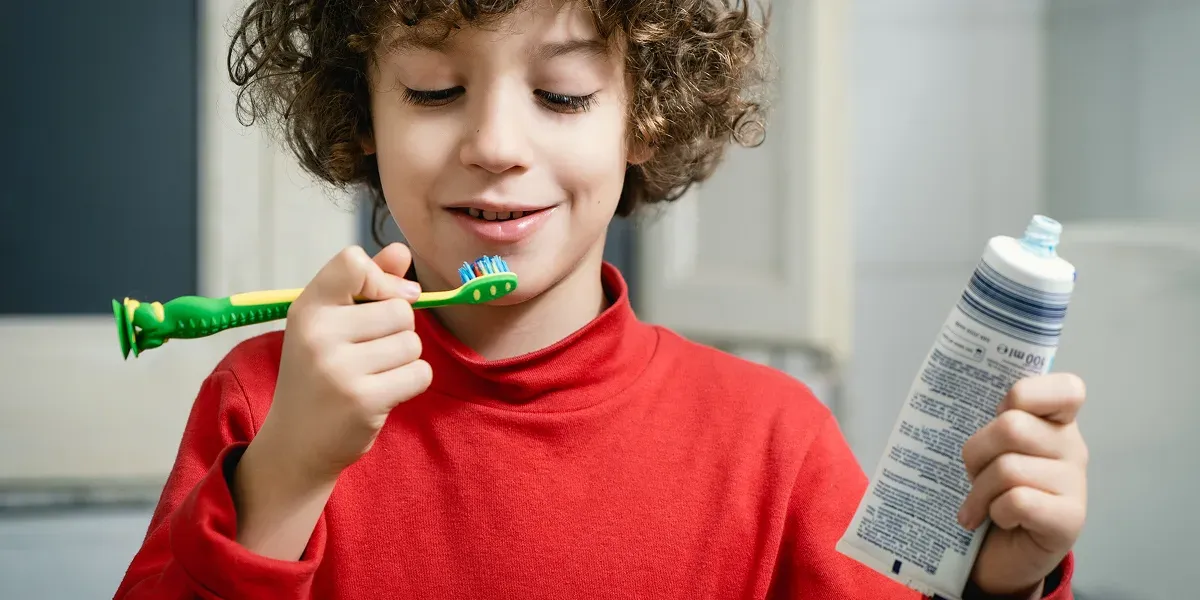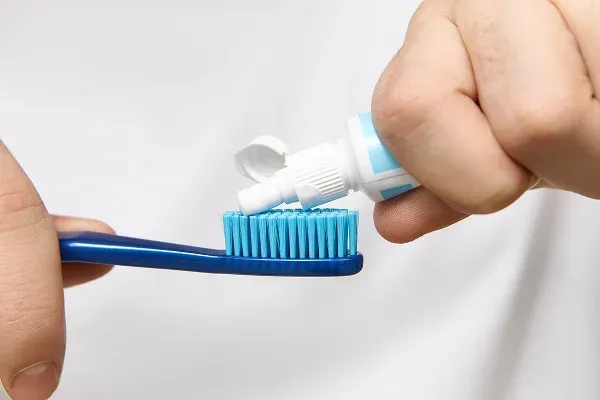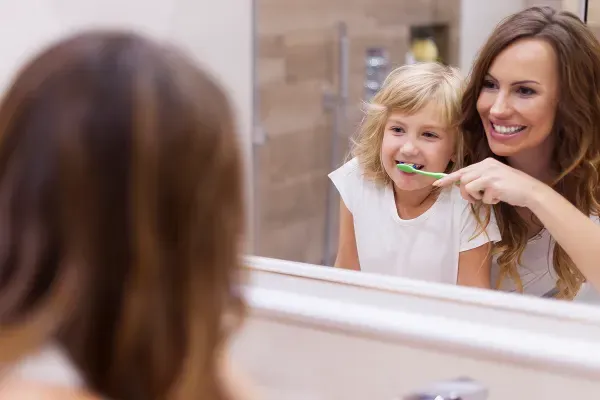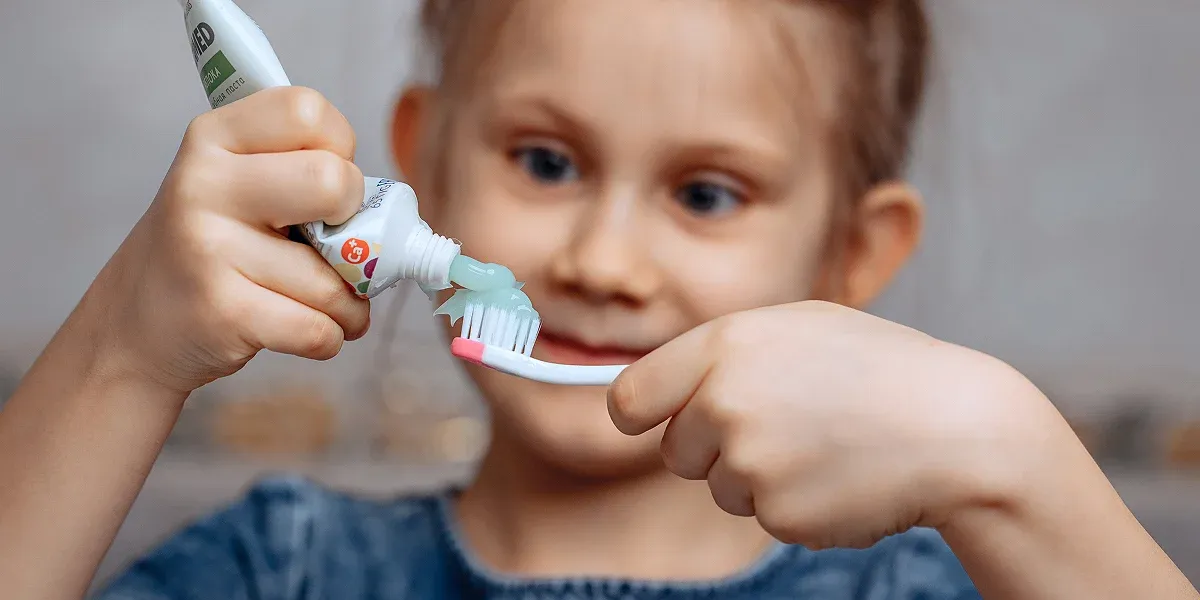
Fluoride vs. Non-Fluoride Toothpaste: Which One Is Better for Kids?
Ever stood in the kids' aisle at the store, staring at two colorful tubes of toothpaste, one with fluoride, one without, and thought, “Wait… which one should I actually be using for my kid?”
You're definitely not alone. Between all the marketing labels, health blogs, and well-meaning advice from other parents, picking the right toothpaste can feel more confusing than it should be. And when it comes to your child's health, it's totally normal to second-guess the little things.
In this blog, we're keeping it simple. We'll walk you through the differences between fluoride and non-fluoride toothpaste, why they matter, and how to determine what's best for your child based on their age, dental needs, and your own comfort as a parent. Let's clear up the confusion—one squeeze of toothpaste at a time.

What Is Fluoride and Why Is It in Toothpaste?
Fluoride is a natural mineral that's been used in dental care for decades. You'll find it in most toothpastes and even in the tap water in many cities. But what exactly does it do?
In simple terms, fluoride helps protect teeth from cavities. It strengthens the enamel, the outer layer of your child's teeth, so it can stand up better against all the sugar, snacks, and bacteria that try to wear it down. For kids who are still learning how to brush properly (and may miss a few spots), fluoride can provide their teeth with some extra protection.
That's why many dentists recommend fluoride toothpaste for children, especially once they're old enough to spit it out after brushing. It's one of those small things that can make a big difference in keeping little smiles healthy as they grow.
Is Fluoride Toothpaste Safe for Children?
This is probably the biggest question parents ask, and it's a good one. Yes, fluoride is safe for children when used the right way. Like anything, the key is using the right amount for their age.
For little ones under three, just a tiny smear of toothpaste (about the size of a grain of rice) is enough. For kids three and up, a pea-sized amount is sufficient. As long as your child isn't swallowing large amounts of toothpaste, fluoride is perfectly safe and actually really helpful in preventing cavities.
If your child has trouble spitting out toothpaste or you're still feeling unsure, talk to your dentist. They can guide you based on your child's age, risk for cavities, and overall oral health. However, in most cases, fluoride toothpaste is a safe and effective choice for maintaining your child's strong teeth.
What Is Non-Fluoride Toothpaste?
Non-fluoride toothpaste is exactly what it sounds like it's toothpaste that leaves out fluoride. Instead, it uses other ingredients, such as xylitol, baking soda, or calcium-based minerals, to help clean teeth and fight plaque.
Some parents prefer non-fluoride options for younger children who tend to swallow toothpaste or those trying to stick with more natural or organic products. These toothpastes can still be a good option for gentle cleaning, especially for toddlers or kids with a very low risk of cavities.
That said, while non-fluoride alternatives can help keep teeth clean, they don't strengthen enamel as effectively as fluoride does. So, if your child is more prone to cavities, your dentist might still recommend sticking with a fluoride-based option once they're old enough to brush and spit properly.
Fluoride vs Non-Fluoride – Kids Toothpaste Comparison,
So how do fluoride and non-fluoride toothpaste really compare? It ultimately comes down to what your child's teeth need, their age, and what you're comfortable with as a parent.
Fluoride toothpaste is great at strengthening enamel and protecting against cavities. It's especially helpful once your child starts getting their permanent teeth or if they snack often or aren't brushing thoroughly yet. As long as they use the right amount and spit it out, fluoride toothpaste is both safe and effective.
Non-fluoride toothpaste can be a gentler option for very young children or families seeking a more natural approach. It keeps the mouth clean and fresh, but it doesn't offer the same cavity protection fluoride does. That doesn't mean it's bad—it just means it works differently.
There's no one-size-fits-all answer. What works for one child might not be right for another. That's why it's a good idea to talk to your dentist, especially if your child has a history of cavities or sensitive teeth.
'Fluoride or not, what matters most is building strong brushing habits early.
The right toothpaste helps, but it's the daily routine. Brushing twice a day, using the right amount, and regular checkups to keep your child's smile healthy and cavity-free for years to come.'

How to Choose the Best Toothpaste for Your Child
Choosing the right toothpaste for your child doesn't have to be overwhelming. Start with their age and brushing habits. If your child is under three and still figuring out how to spit, a small amount of non-fluoride toothpaste can be a safer choice. For children over three who can spit reliably, fluoride toothpaste is usually the better option for preventing cavities.
Consider your child's risk level as well. If they've had cavities before, snack frequently, or skip brushing occasionally (which happens!), fluoride toothpaste can provide that extra layer of protection. If they're at low risk and you prefer a natural product, non-fluoride alternatives may still do. Just keep an eye on their brushing habits.
When in doubt, ask your pediatric dentist. They can help you choose something that fits your child's specific needs so you feel confident about what's going on their toothbrush every day.
What About Flavours and Fun?
Let's be honest: if your child doesn't like the taste, it's going to be tough to make brushing a habit. Luckily, both fluoride and non-fluoride toothpastes come in a wide range of kid-approved flavours, such as bubblegum, strawberry, and even watermelon. Some brands also add sparkles or colourful packaging to make brushing more exciting. The goal is to make the experience fun and something your child looks forward to, regardless of the type of toothpaste you choose.
Final Thoughts
When it comes to fluoride vs. non-fluoride toothpaste, there’s no one-size-fits-all answer. The “best” choice depends on your child’s age, brushing habits, and overall dental health. Fluoride toothpaste offers strong protection against cavities, while non-fluoride alternatives can be a gentle option for little ones who are still learning to brush.
At the end of the day, the most important thing is building consistent brushing habits early—twice a day, the right amount of toothpaste, and regular checkups. The toothpaste you choose should support that routine and make brushing something your child enjoys.
If you’re still unsure what’s best for your little one, we’re here to help. At Happy Kids Dental, we’ll guide you through the right choice based on your child’s unique needs—no stress, just support.
Book an appointment today and give your child the confidence of a healthy, happy smile that lasts a lifetime.
Contact your kids' dentist in Stockton, Dr. Sajjad Rizvi, D.D.S. at Happy Kids Dental, to know more about Fluoride vs. Non-Fluoride Toothpaste and Which One Is Better for Kids?
Resource:
What is the best age for your kids to start fluoride?
*This media/content or any other on this website does not prescribe, recommend, or prevent any treatment or procedure. Therefore, we highly recommend that you get the advice of a qualified dentist or other medical practitioners regarding your specific dental condition*
Subscribe To Our Newsletter
Get Updates And Learn From The Best


